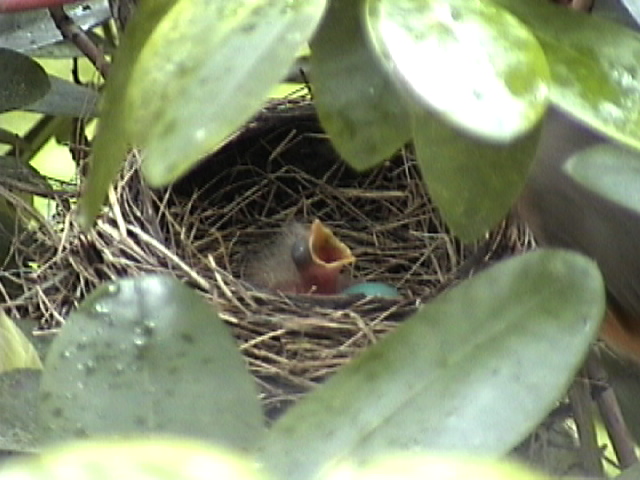![]() Observation: The First Step in the Scientific Method
Observation: The First Step in the Scientific Method
To observe means to look at something and to notice the details. When people observe things they often wonder why it is that way. Scientists work to answer that question. They make observations as the first step to the scientific method.
Observations are also called data. There are two kinds of data.
* Qualitative data are descriptions that do not have numbers.
It is so hot today, you could fry an egg on a sunny spot on the sidewalk, is an example of qualitative data.
* Quantitative data are obtained by measuring and have numbers. Scientists use instruments (tools) to obtain numbers based data.
8/18/08 1300 hours GMT - the thermometer reads 42° Celsius on the playground.
It is important to be a careful observer. The smallest detail may be important to finding the answer to a question.
Practice observing by looking at this photo. How many details you can find?
If you click here, a closer view will appear. Use the Back Button of your browser to return to this web page.
1. Write your observations - one per line - on a piece of paper. Make as many observations as you can.
Collect at least 2 quantitative data and 2 qualitative data.
2. Imagine - If you were standing in the scene:
What tools (instruments) would help you to be a better observer?
What tools (instruments) might you use to measure what you are observing?
3. Write at least three questions that you have about what you have observed.
Explore further:
Check out NestWatch. (NestWatch is a continent wide citizen-science project)
About Units of Measurement - IB Biology | Observing Biology how to's | Eagles in your State
Steps of the Scientific Method - Science Buddies | Learn about the Scientific Method Activity
Student Observation Network@ NASA | Observation Sceince Skills Builders | What is the Scientific Process?
"Observe constantly that all things take place by change, and accustom thyself to consider
that the nature of the Universe loves nothing so much as to change the things which are,
and to make new things like them." Marcus Aurelius
Collecting Data | Bluebirds Project | Nests Internet Hunt | Eggs Facts Finds: Begin - Adv. | Birds basics | Adv Birds Activity
![]()
All trademarks, copyright and logos belong to their respective owners.
Internet Hunts / Nature / Water Studies / Computers / Famous Pennsylvanians / Civics / Puzzles & Projects / Site map / Home
FAQ Posted
by Cynthia J. O'Hora 2/2007
Aligned
with Pennsylvania Academic Standards | Assessment and Rubrics
![]() Save a tree - use a Digital Answer Format - Highlight the text. Copy it. Paste it in a word processing document. Save the document in your folder. Answer on the word processing document in an easily read, contrasting color or font. (Not yellow ) Avoid fancy fonts like Symbols, Techno,
Save a tree - use a Digital Answer Format - Highlight the text. Copy it. Paste it in a word processing document. Save the document in your folder. Answer on the word processing document in an easily read, contrasting color or font. (Not yellow ) Avoid fancy fonts like Symbols, Techno, ![]() fonts). Save frequently as you work. I have never liked losing my work. You will not like it either. Be sure to enter your name & the date in the header of the document. Submit via email attachment or class dropbox. Bad things happen: Save a copy of the response document for your records.
fonts). Save frequently as you work. I have never liked losing my work. You will not like it either. Be sure to enter your name & the date in the header of the document. Submit via email attachment or class dropbox. Bad things happen: Save a copy of the response document for your records.
Proof your responses. It is funny how speling errors and typeos sneak in to the bets work. ![]() Make your own printer paper answer sheet
Make your own printer paper answer sheet
